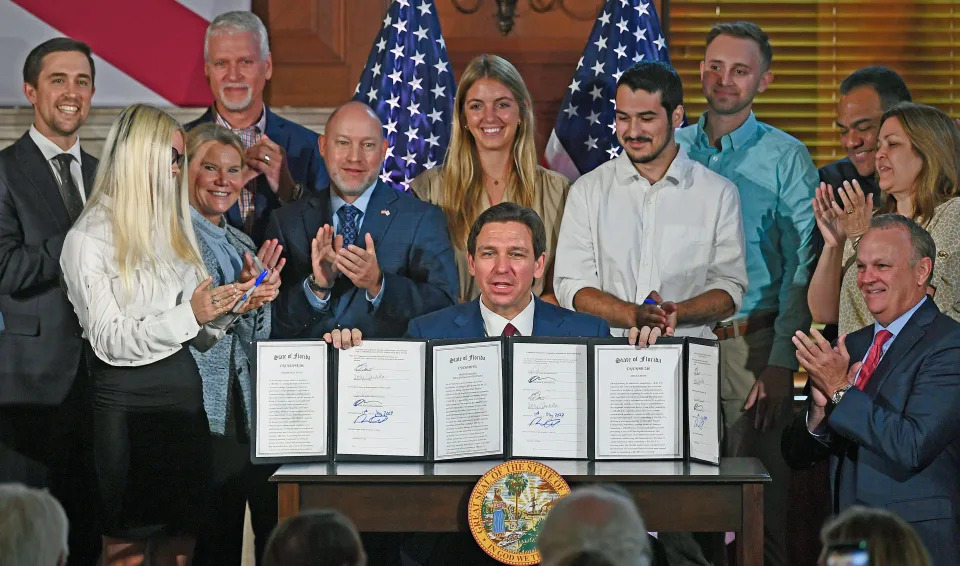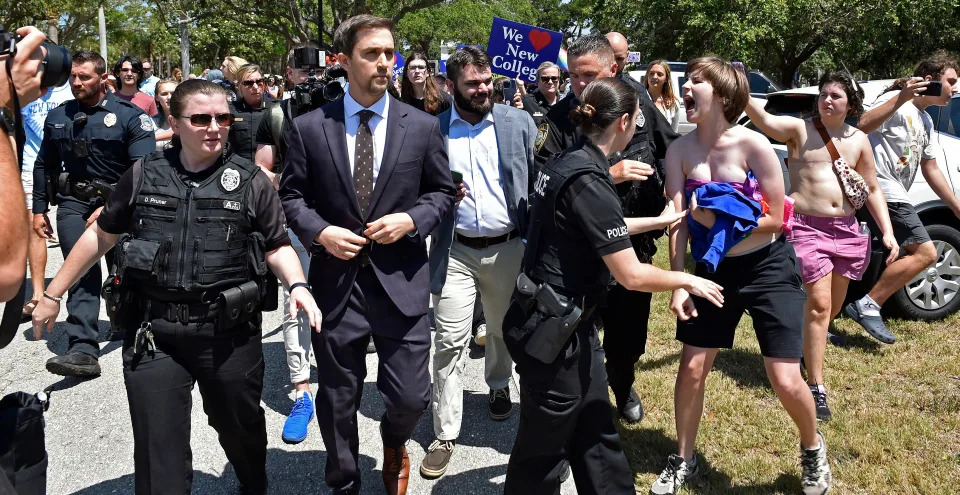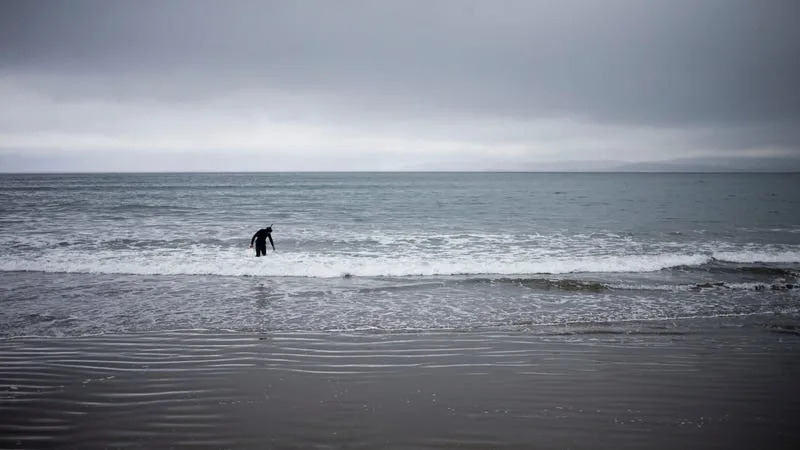Sarasota Herald Tribune
DeSantis signs bill banning funding for college diversity programs
Zac Anderson, Steven Walker, Sarasota Herald-Tribune – May 15, 2023
Gov. Ron DeSantis signed legislation Monday banning state funding for diversity, equity and inclusion programs at Florida’s public universities, staging the event at New College of Florida, which the governor has transformed into a conservative higher education experiment.
A New College board revamped by DeSantis abolished the school’s DEI office, and the college’s interim president recently fired the diversity dean, a precursor to what other Florida universities could experience under SB 266, which was a centerpiece of DeSantis’ aggressive legislative agenda this year.
More: DeSantis says GOP must end a ‘culture of losing’ but still won’t acknowledge Trump lost
The latest headlines: New College campus café re-opens with vendor tied to Interim President Corcoran
Intrigue: Florida Senate won’t confirm controversial New College board member, who blames Corcoran
As he gears up for a run for president, DeSantis has emphasized a culture war agenda against so-called “woke” policies, and universities have been a major focus. The governor has decried a campus culture that he views as overly focused on issues of racial, gender and LGBTQ equity.
The legislation signed by DeSantis Monday also restricts how gender and race are taught on campus. It requires university officials to review any lessons “based on theories that systemic racism, sexism and privilege are inherent in the institutions of the United States and were created to maintain social, political and economic inequities.”

DeSantis said Monday that DEI really should stand for “discrimination, exclusion and indoctrination.”
“This has basically been used as a veneer to impose an ideological agenda and that is wrong,” he said.
Democrats said the legislation will hurt students and Florida’s university system.
“Governor DeSantis is treating freedom of speech as an enemy, and the Legislature allowed his partisan politics to get in the way of initiatives that have progressed us as a nation to allow students from diverse backgrounds and experiences be included in places where historically they have not been accepted,” said Lauren Book, the Democratic leader in the state Senate.
DeSantis also signed HB 931 and SB 240, which prohibit Florida colleges from requiring students, faculty or staff to sign in support of DEI and expand apprenticeship programs, respectively.
New College has been at the forefront of DeSantis’ higher education agenda ever since he appointed six new board members on Jan. 6. DeSantis has talked about turning New College, Florida’s public honors college, into something resembling Hillsdale College, a private Christian school in Michigan.
The new board quickly fired the president and installed a DeSantis ally in her place, eliminated the DEI office and rejected early tenure for five professors, among a litany of changes that have dramatically altered the trajectory of the school.
Interim President Richard Corcoran also fired the diversity dean, who is transgender, and a librarian who also is a member of the LGBTQ community.
At the same time, state lawmakers have appropriated an extra $50 million for New College since Jan. 6 to accelerate the conservative transformation. The money is being used to recruit students, hire new faculty and create new sports teams, among other programs.
Investigative report: As DeSantis, legislature weaponize diversity initiatives, many are enshrined in Florida law
Whiplash: Florida universities were told to prioritize diversity plans. Now, DeSantis aims to gut them
Controversy in the classroom: Florida teacher investigated by state agency for showing Disney movie in class
“I don’t think they’ve ever gotten that infusion in the history of the college,” DeSantis said, drawing applause from the crowd of 75 people gathered in College Hall. “We are committed to the mission here. I would love for this to be, and I think it will be, the top classical liberal arts college in America.”
Out front of College Hall, students gathered on short notice to rally in protest of DeSantis and the bill. Several students woke up to texts from other students about the event.
Libby Harrity, 19, had attended rallies outside of Board of Trustees meetings, and learned of Monday’s event shortly before it started. Harrity and other students jeered at DeSantis supporters as they pulled into the parking lot at College Hall.
“I have the fire of 10,000 suns in my soul, and it’s all of the transgender energy,” they said.
Jackson, a 20-year-old New College student, said he had an exam scheduled for 12:30 p.m. at College Hall. He said his professor was unaware that DeSantis was coming and that his exam may have to be moved because of it.

“They’ve been doing this for decades, and it’s these like constant surprise attacks on people who are 20-year-old students who just want to have, like, a normal education and life,” said Alex Abraud, a 21-year-old anthropology student.
The protestors chanted throughout DeSantis’ event and could be clearly heard inside College Hall during speeches by the governor and others.
“I saw some of the protesters out there,” DeSantis said. “I was a little disappointed. I was hoping for more.”
Christopher Rufo, a DeSantis appointee to the New College board, also mocked the protesters.
Rufo is a conservative activist and prominent critic of DEI who called the legislation DeSantis signed Monday “once-in-a-generation reforms.” He noted that he lives in the Seattle area, and said protests there are common.
“This is kind of kindergarten-level protest,” he said.
Following the event, Rufo met protesters outside where he blew kisses to them as they chanted “f—- you fascist.” The protesters then followed Rufo to his car, where he was escorted out by police.








